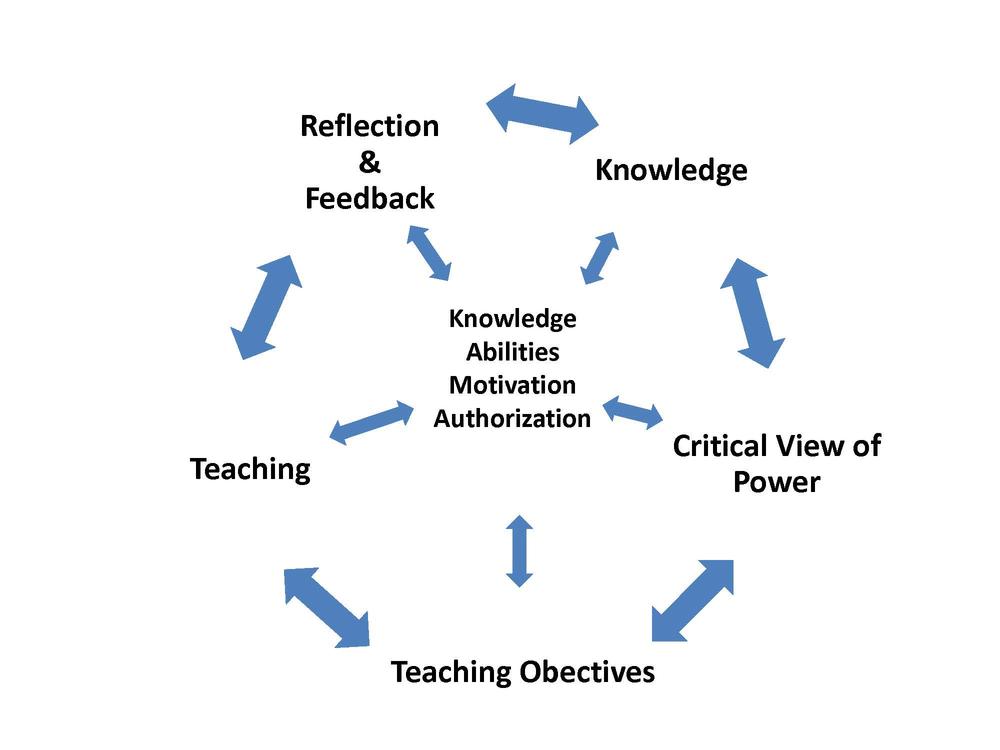Skills Acquisition Cycle
Gender and Diversity Skills for University Teachers
To teach well, lecturers need a wide range of skills. In addition to specialized skills, communication skills, and methodological skills, these also include skills in gender and diversity that are closely linked to all the other skill sets.
Lecturers are not automatically equipped with these skills. If you want to incorporate aspects of gender and diversity more firmly in your teaching and develop greater sensitivity to anti-discrimination and participatory communication (motivation), you can gradually expand the capabilities you need to do so in your teaching. This page describes how the process of skills development can progress. The following illustration summarizes this cycle:
Building on your own specialized and methodological expertise (knowledge and abilities) and the specifications of the study and examination regulations (authorization), you can review and determine which of your learning objectives for your teaching relate to gender and diversity. Take your aspired learning objectives as the basis for your course planning. As you conduct your class, take notes on the aspects that seem to have gone well or that posed difficulties for you or your students. Based on your notes and your students’ feedback, using questions for reflection such as those in the Evaluation of Methods or the checklist, you can go over your plan, the progress, and the results of your course, keeping successful aspects, and devising alternatives to any problematic aspects. When you relate your new experiences to new specialized and methodological knowledge, you will be able to develop an attitude that takes a critical view of power and pays attention to gender and diversity.
You can apply your experiences and reflections to your future teaching.
By nature, this process is never complete. As you continually gather experience, the cycle repeats itself. Aspects of gender and diversity play a role in every stage of the process.
You can familiarize yourself with gender and diversity skills in the Skill Areas and Guidelines sections and on the Course Content and Methods pages.
Version April 2017. Unless otherwise stated, this content is licensed under a Creative Commons Attribution-Share Alike 4.0 International licence.


